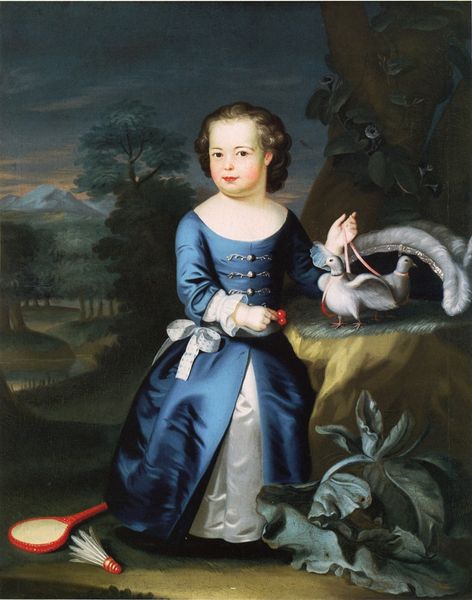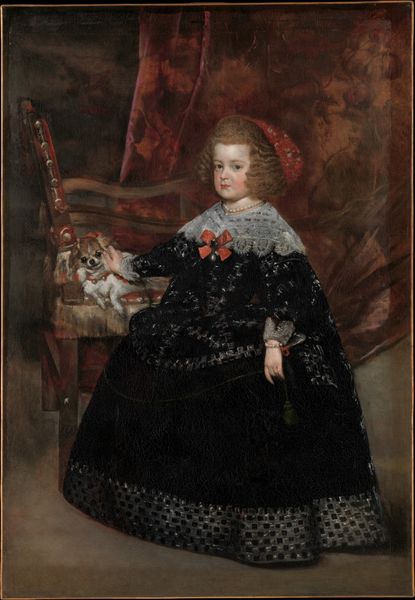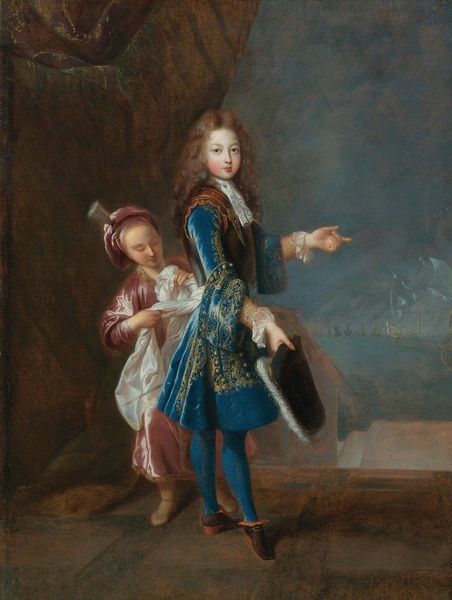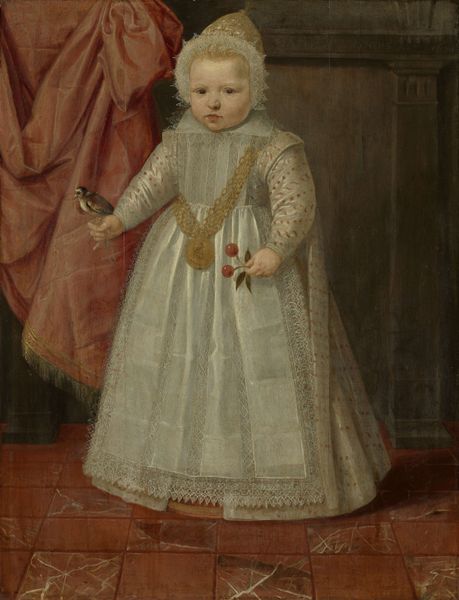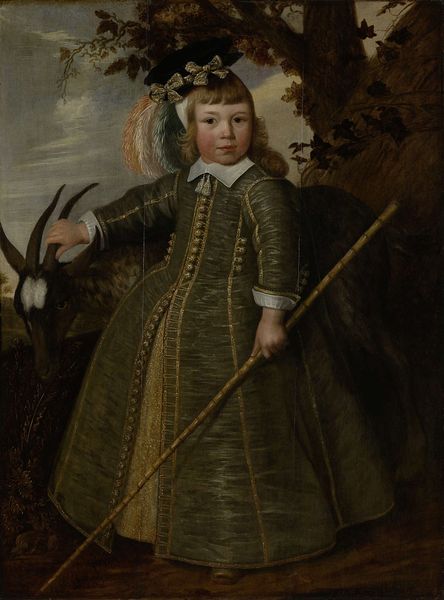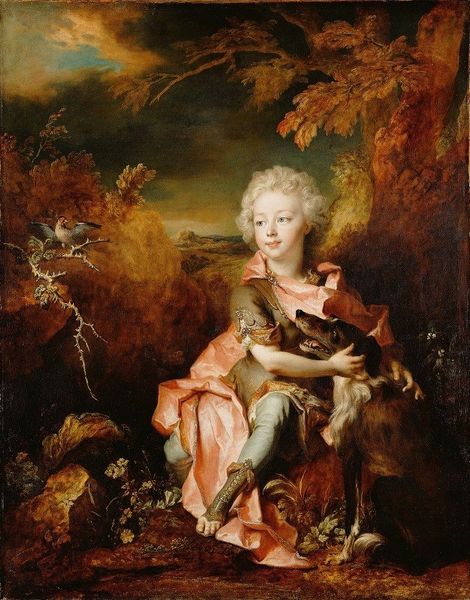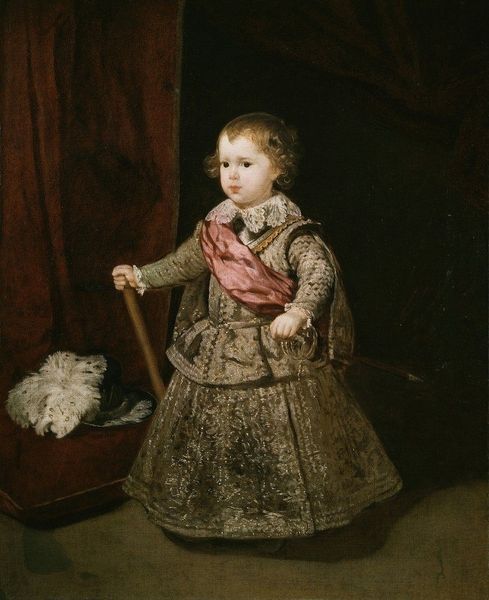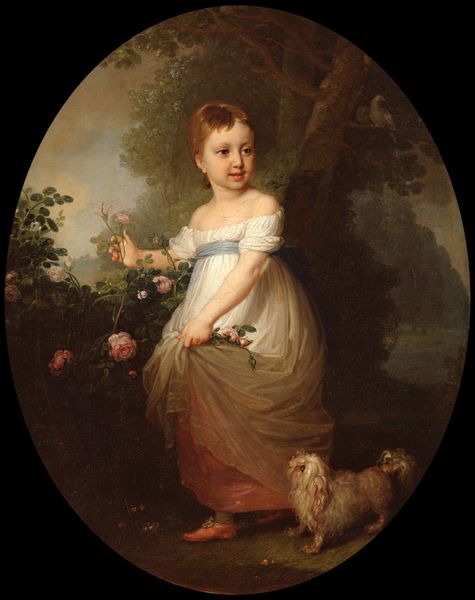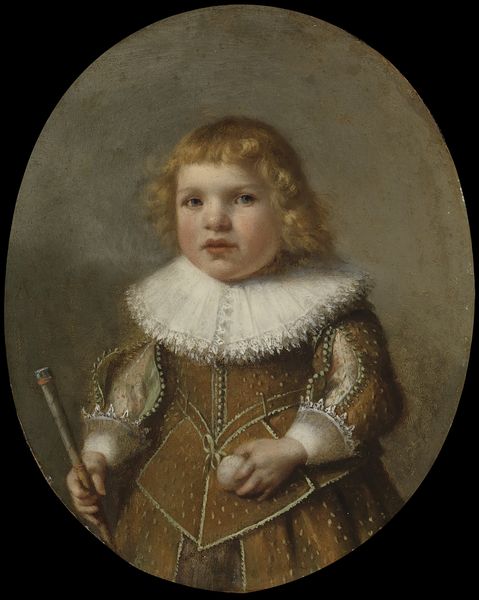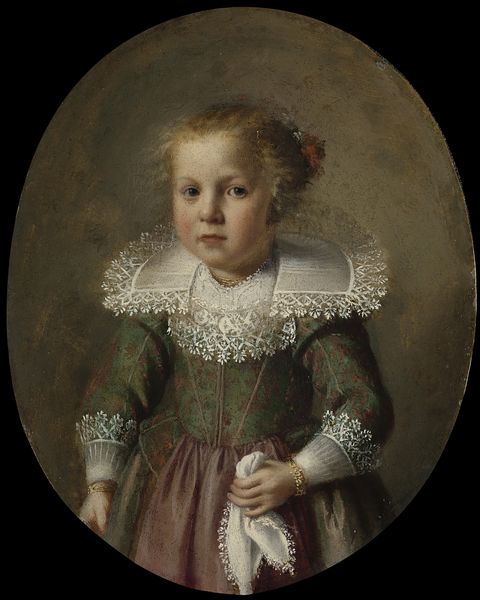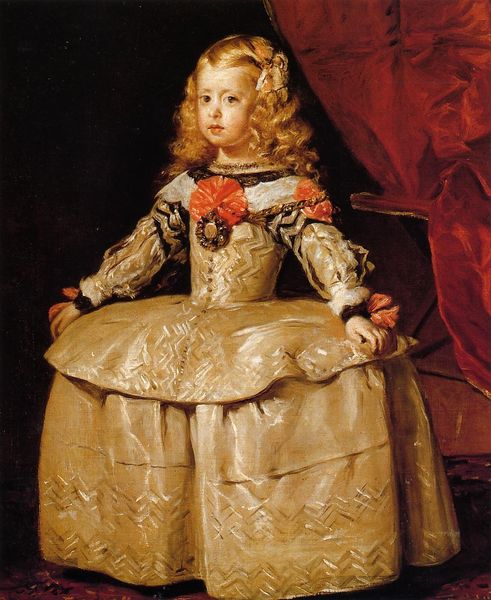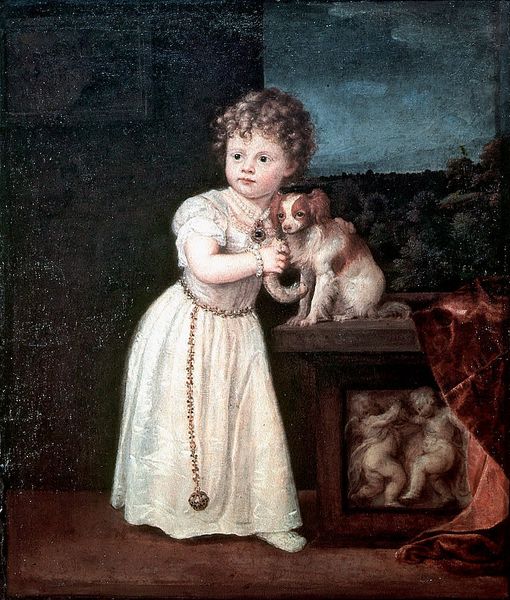
oil-paint
#
portrait
#
narrative-art
#
baroque
#
dutch-golden-age
#
oil-paint
#
landscape
#
figuration
#
oil painting
#
genre-painting
Dimensions: height 122 cm, width 89.5 cm, depth 7.8 cm
Copyright: Rijks Museum: Open Domain
Editor: Here we have Dirck Dircksz. van Santvoort’s “Portrait of Clara Alewijn” from 1644, oil on canvas. I’m immediately struck by the contrast between the opulence of the girl’s dress and the seemingly humble setting with the sheep. What do you make of this intriguing juxtaposition? Curator: It is intriguing, isn’t it? Think about the enduring symbols present: the shepherdess, traditionally associated with innocence, pastoral life, and even religious allegory. What does it signify when applied to a clearly wealthy child? The symbols around her carry significant weight. The sheep themselves may not just represent pastoral idyll but innocence, and wealth of the patron’s family. Editor: So, the painting isn't just a portrait; it's presenting Clara as something more than just a young girl? Curator: Precisely. Consider the formal attire, the carefully arranged flowers on her dress, and even the objects scattered on the ground, such as the knife or scissors. Each item subtly speaks to her family's status, aspirations, and even perhaps their understanding of the brevity of life, almost like an allegory. How do you think these contribute to our understanding of the sitter? Editor: It’s as if the painting is crafting an identity for her, projecting a specific image intended to endure beyond her lifetime. It speaks volumes about how families wished to be perceived, the stories they wanted to tell through art. I hadn’t considered the flowers on her dress as symbolic objects, or their relation with a brief existence of a flower or even youth in the family. Thank you for pointing that out. Curator: Exactly, each portrait provides a window into how sitters desired to project a desired personal brand, and they tell complex visual stories when considered within their historical and cultural context. I'm glad to shed light on these details.
Comments
rijksmuseum over 2 years ago
⋮
Clara Alewijn was only nine years old when she sat for this painting. It is the pendant of the portrait of her brother Martinus. Mirroring him, Clara is portrayed as shepherdess sitting beneath a tree and surrounded by sheep. She holds a staff and flowers in her right hand. The bow and quiver in the foreground refer to hunting. Her festive fantasy gown lends the scene a timeless character.
Join the conversation
Join millions of artists and users on Artera today and experience the ultimate creative platform.
